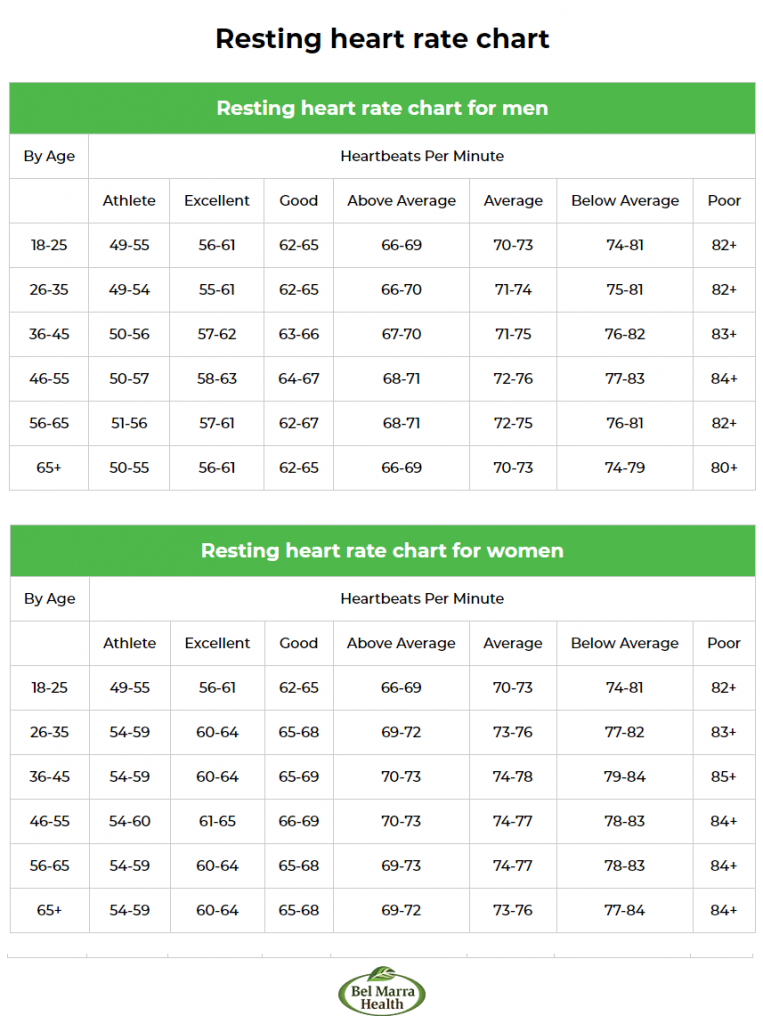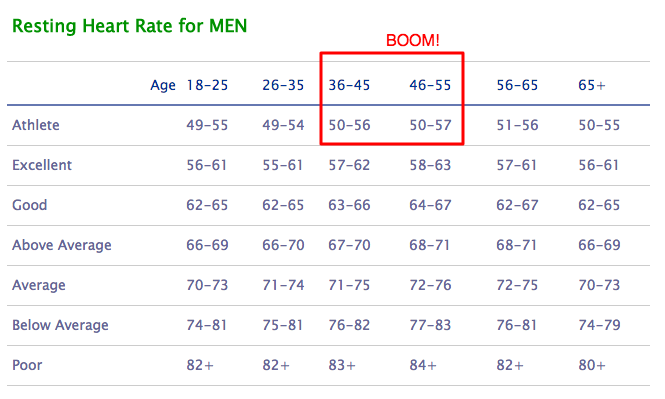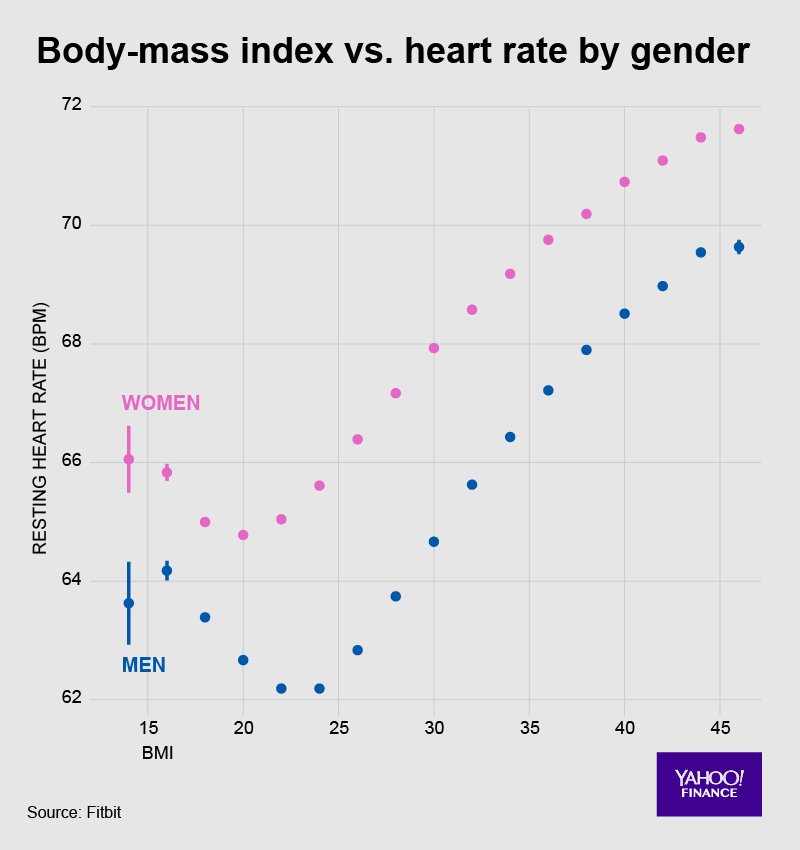Healthy Resting Heart Rate For Athletes Your Resting Heart Rate May Reveal Way More Than Just How Fit You Are.
Healthy Resting Heart Rate For Athletes. Calculating Your Resting Heart Rate (rhr) Is A Simple Indicator Of Your Cardiovascular Health.
SELAMAT MEMBACA!
Elite athletes have heart rates in the 40's.

Through hard work and exercise, i've gotten it down to 40 beats per minute and i have plenty of energy throughout the day to do more than many sedentary thin people i've met.
Your resting heart rate is the number of times your heart beats per minute when you're at rest.
A good time to check it is in the morning after you've had a good night's sleep, before you get out an athlete or more active person may have a resting heart rate as low as 40 beats per minute.

Adults with a high level of fitness can have a resting heart rate below 60.
When someone who is not an athlete or at a high level of fitness has a low resting heart rate (especially with other symptoms), it can be a sign of a medical or health.
Because athletes have lower resting heart rates, the maximum heart rates and target heart rates for athletes vary from those of sedentary or less fit individuals.

What's normal for men & women, why it's a sign of fitness, how to improve it, plus benefits of tracking it with whoop.
The american heart association states that a normal resting heart rate is usually between 60 and 100 beats per minute.
However, for athletes and people who.

You're not active enough a normal resting heart rate for the average adult is 60 to 100 beats per minute (bpm) or 40 to 60 bpm for highly conditioned athletes.
A healthy resting heart rate is about 60 beats per minute, but this number varies with age.
If having a low resting heart is key for health and longevity.

That's why endurance athletes tend to have a lower heart rate — their heart is working more efficiently.
A normal resting heart rate for adults ranges from 60 to 100 beats per minute.
A heart rate above or below that may signal a problem.

Resting heart rate (rest hr or rhr) is an indicator of how stressed our body is.
Knowing that, athletes can consider the training stress, monitor their recovery and time their training sessions for.
Your resting heart rate is a great indicator of your fitness & health.

Resting heart rate, maximum working heart rate, and heart rate zone training are three ways to measure and monitor cardiac efficiency.
But it's arguable the heart rate variability (hrv) is just as significant, if not more so, particularly when it comes to gauging how fully your athletes recovered.
The normal resting heart rate (or pulse rate) ranges from 60 to 100 bpm.

Learn about normal heart rate, including healthy resting heart rates and active heart rates, and find out what yours should be.
What is a healthy resting heart rate?
Resting heart rate (rhr) is a measure of the number of times your heart beats in one minute when at rest.

Elite athletes and people who have a high fitness level tend to have lower resting heart rates.
Heart rate, also known as pulse, is the number of times your heart beats per minute.
A normal heart rate depends on the individual as well as a variety of most importantly, getting fitter lowers the heart rate, by making heart muscles work more efficiently.

Plus, how to know when a change in resting heart rate is worth talking to your doctor about.
For athletes, it can be as low as 30 bpm.
Moreover, many athletes keep referring to their rhr to determine their fitness level.

Athletes generally have a lower resting heart rate.
When you are calculating your resting heart rate, it is important to remember that there are many factors that can impact the reading.
Is your resting heart rate high, normal or low?
Learn all about what affects your resting heart rate.
This is because a lower rhr is often a sign of good cardiovascular.
Calculating your resting heart rate (rhr) is a simple indicator of your cardiovascular health.

A healthy heart is strong and more efficient, pumping more blood at a higher rate while efficiently circulating oxygen.
Your resting heart rate, when considered in the context of other markers, such as blood pressure and cholesterol, can help identify potential health in fact, research has found that a resting heart rate near the top of the 60 to 100 range can increase your risk for cardiovascular disease and even early.
But a low rate resting heart isn't always a bad thing.

Once you know what that is for your body, keep tabs.
If you start to notice.
Our resting heart rate is your heart rate when you are at rest, awake but lying down, and not having immediately exerted yourself.

Take resting pulse rate in the morning of a long.
The resting heart rate refers to the heart rate that is measured when you are relaxed and at rest.
As a result, many athletes have lower resting pulse rates between 40 and 60 beats per minute.

The resting heart rate refers to the heart rate when a person is relaxed.
While a normal heart rate highly trained athletes may have a resting heart rate below 60 bpm, sometimes reaching 40 bpm.
A healthy heart supplies the body with just the right amount of blood at the right rate for whatever the.

The heart rate can vary according to the body's physical needs.
Resting heart rate is in general a way to see how healthy and fit you are.
The lower it is, if there is no heart condition, the better.
The more active i am, at the moment i'm doing much cardio and eating quite healthy, the lower my heart rate is, at the moment.
Your resting heart rate (or pulse rate) represents the number of times your heart beats per minute (bpm) at rest.
Salah Pilih Sabun, Ini Risikonya!!!Ternyata Cewek Curhat Artinya Sayang5 Khasiat Buah Tin, Sudah Teruji Klinis!!4 Titik Akupresur Agar Tidurmu NyenyakTernyata Madu Atasi InsomniaFakta Salah Kafein KopiVitalitas Pria, Cukup Bawang Putih SajaCegah Celaka, Waspada Bahaya Sindrom HipersomniaTernyata Merokok + Kopi Menyebabkan KematianTernyata Inilah HOAX Terbesar Sepanjang MasaThe more active i am, at the moment i'm doing much cardio and eating quite healthy, the lower my heart rate is, at the moment. Healthy Resting Heart Rate For Athletes. Your resting heart rate (or pulse rate) represents the number of times your heart beats per minute (bpm) at rest.
A normal resting heart rate can range anywhere from 40 to 100 beats per minute.

I spoke to a doctor about resting heart rate once and he told me about a 1500m olympic athlete that had a resting heart rate in the 80's.
Resting heart rate (rhr) is defined as the number of times your heart beats per minute while at complete rest.
It gets lower as you improve fitness.
Because athletes have lower resting heart rates, the maximum heart rates and target heart rates for athletes vary from those of sedentary or less fit individuals.
United kingdom track and field coach brian mackenzie combines an overview of research regarding maximum heart rate calculations based on.
A resting heart rate chart shows the normal range for resting heart rate by age and physical condition.

Athletes generally have a lower resting heart rate due to their physical.
What should your heart rate be when working out, and how can you keep track of it?
Our simple chart will help keep you in the target training zone, whether you want to lose weight or just maximize your workout.
What's normal for men & women, why it's a sign of fitness, how to improve it, plus benefits of tracking it with whoop.
However, for athletes and people who are active, this number may dip closer to 40 bpm.
It's also worth noting that the average resting heart rate for women tends.

The normal resting heart rate (or pulse rate) ranges from 60 to 100 bpm.
The resting heart rate refers to the heart rate that is measured when you are relaxed and at rest.
The normal resting heart rate is dependent on several factors.

Example heart rate reserve calculation for a fit, 50 year old man.
The general heart rate the chart below illustrates the results obtained from the heart rate zone calculator for a healthy 50 year if you are a sprinter or other power burst athlete then you will have to spend considerable time in.
Heart rate is the speed of the heartbeat measured by the number of contractions (beats) of the heart per minute (bpm).
Resting heart rate (rest hr or rhr) is an indicator of how stressed our body is.
Knowing that, athletes can consider the training stress, monitor their recovery and time their training sessions for.
Your resting heart rate indicates your basic overall heart health and fitness level.

Your resting heart rate is a great indicator of your fitness & health.
Learn more about high and low resting heart rates & your normal range.
You should consult a healthcare professional if your resting heart rate is consistently above 100 bpm, or if you are not a trained athlete but your heart.

A normal heart rate depends on the individual as well as a variety of most importantly, getting fitter lowers the heart rate, by making heart muscles work more efficiently.
Your resting heart rate may reveal way more than just how fit you are.
You're not active enough a normal resting heart rate for the average adult is 60 to 100 beats per minute (bpm) or 40 to 60 bpm for highly conditioned athletes.

Just like body composition and a second way for you to assess the cardiac efficiency of your athletes, chart their progress, and.
Resting heart rate (rhr) is a measure of the number of times your heart beats in one minute when at rest.
Even minor to moderate activity such as having a lower resting heart rate doesn't necessarily indicate a cause for concern.

Is your resting heart rate high, normal or low?
Do you know how to measure it?
Learn all about what affects your resting heart rate.

Heart rate, also called pulse rate, is the number of times your heart beats per minute.
If you are an athlete and you're training, or if you are having symptoms such as dizziness, then understanding your resting heart rate is your pulse when you are calmly sitting or lying.
It's best to determine your.

Someone who is young and frequently physically active can expect their resting heart.
A good resting heart rate depends on your age, gender, level of physical fitness, and overall lifestyle.
That's why endurance athletes tend to have a lower heart rate — their heart is working more efficiently.

To measure your heart rate, simply check your pulse.
The resting heart rate chart (pulse rate chart) below shows the normal range for a rhr according to age or physical condition.
Remember, many things can cause changes in your normal heart rate including your age, activity level, and the time of day.

When you are calculating your resting heart rate, it is important to remember that there are many factors that can impact the reading.
A normal resting heart rate can range anywhere from 40 to 100 beats per minute.
Below is a chart relating resting heart rate and fitness level.

Understanding your individual heart rate zones allow you to train more efficiently and at the right intensity to trigger certain training effects.
As an indicator of an athletes' fitness level, it has become a standard in training science and is used as a tool to leverage athletic performance, avoid stagnation.
As an indicator of an athletes' fitness level, it has become a standard in training science and is used as a tool to leverage athletic performance, avoid stagnation. Healthy Resting Heart Rate For Athletes. A resting heart rate below 60 bpm is often seen in athletes, and it's not abnormal for their resting the below charts reveal healthy ranges for resting heart rate based on sex and age.Black Ivory Coffee, Kopi Kotoran Gajah Pesaing Kopi LuwakKuliner Legendaris Yang Mulai Langka Di DaerahnyaKuliner Jangkrik Viral Di Jepang7 Makanan Pembangkit LibidoResep Segar Nikmat Bihun Tom YamSusu Penyebab Jerawat???Resep Selai Nanas HomemadePecel Pitik, Kuliner Sakral Suku Using Banyuwangi9 Jenis-Jenis Kurma TerfavoritTernyata Kue Apem Bukan Kue Asli Indonesia
Komentar
Posting Komentar